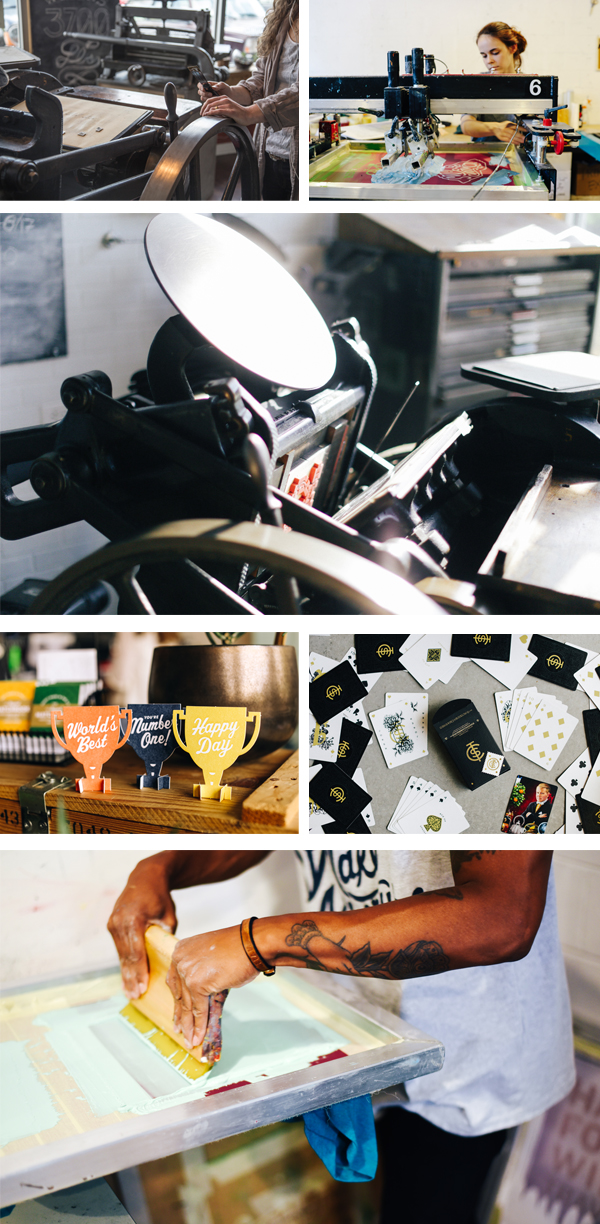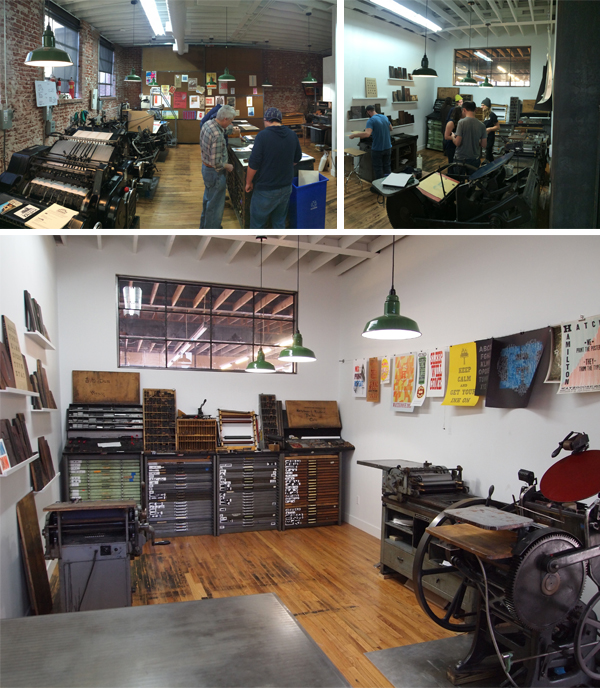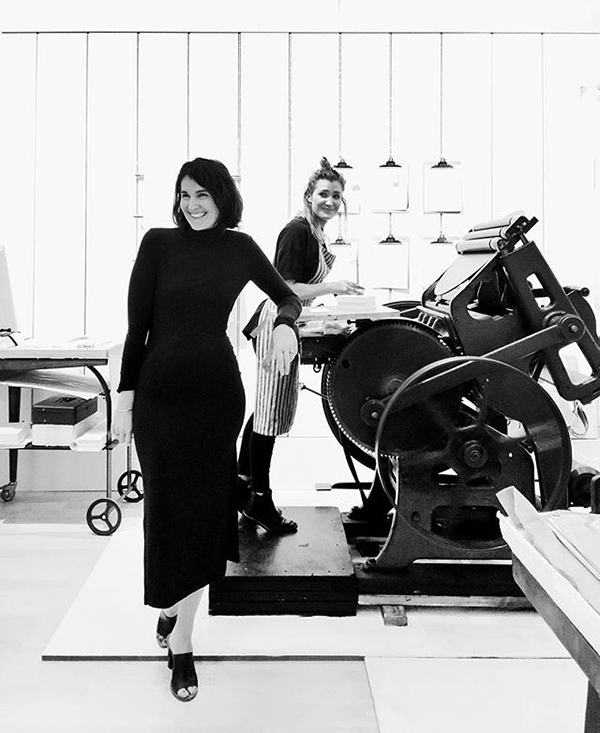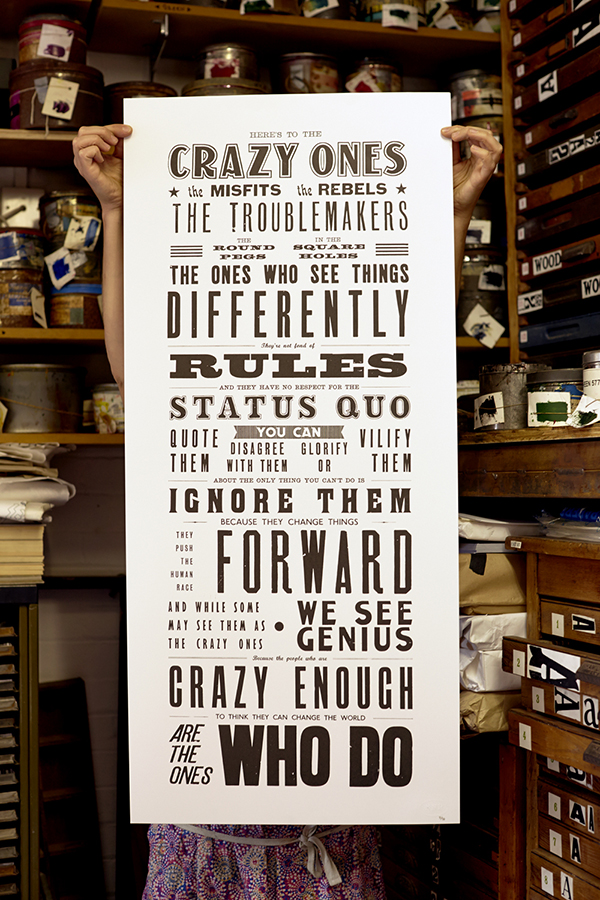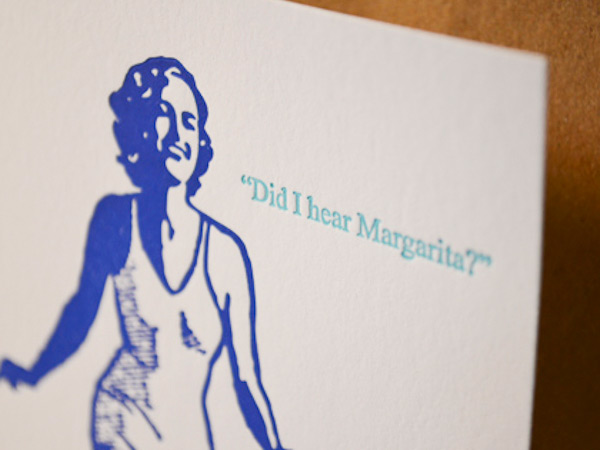Combine best friends, nerdy artsy passion, part-time printing & designing, and cheery, brilliant letterpress cards and you have the formula for the winning dynamic behind Wolf & Wren. Colorado-based Lauren Stapleton and Chicago-based Liz Wolf have harnessed their love for letterpress, passion for printing, and “go get’em” attitudes to flourish from a small ten card line to a 78-card line sold all over the country. Both sat down with us to discuss how they’ve been able to manage working across the country, the loving support of friends & family, and the happy, coffee-soaked moments when they get a chance to meet up throughout the year.

THE CREATIVE DUO Wolf & Wren Press is best friend duo, Liz Wolf and Lauren Stapleton. We collaborate to produce special letterpress printed cards and other paper goods.
We met in childhood as budding artists. As adults, our background in the arts ranges from printmaking and paper-making to painting and bookbinding. Our sustaining mantra is combining good ideas with diligent planning, elbow grease, patience, and a little fun. We started Wolf & Wren Press to create unique and heartening products. All cards are illustrated, printed and packaged by us!

LS: I live in a beautiful old town neighborhood of Longmont, Colorado with my husband, Matt, 1-year-old son, Micah, and our Newfoundland, Beatrice. In my spare time I try to fly fish, print for pleasure, eat s’mores by a campfire, cook, and drink beer. But spare time doesn’t really enter my lingo very often as my husband can attest to.

LW: I live in Chicago, IL in the Andersonville neighborhood on the north side. My husband Will and I are expecting our first baby in 6 weeks. I love to draw, hunt for vintage treasures, go out for walks and brunch, drink coffee or red wine, and laugh with friends. Currently, I love to binge Netflix, go for short walks, and prep our apartment (whoa- nesting is real!).
Our workload with Wolf & Wren has increased a ton in the last year, but Lauren and I are able to keep our lives in balance. I attribute this success to running a business with your best friend. It is so satisfying to accomplish our goals together.
LETTERPRESS LOVE AT FIRST SIGHT LS: In college at Colorado State, I was a printmaking major, and simultaneously worked in the preservation lab of the university library fixing books. After college, I moved to San Francisco and became a bookbinder at Taurus Bookbindery, and took some classes at SF Center for the Book on letterpress printing. I realized that letterpress was the commonality between books and printing and fell in love. I immediately found a job as a letterpress printer to learn the trade further.

LW. My last semester of college at University of Illinois, I took a book arts class. My professor Bea Nettles introduced me to the Columbia College Chicago Book and Paper program. Soon after I started the MFA program and delved into the world of papermaking, letterpress, and bookmaking. I still concentrated on drawing which was/is my main interest. I was able to produce all of my drawings into printed matter, which was awesome. I love letterpress.

PRESS HISTORY LS: I bought a Vandercook SP15 in 2008. I actually ran the business hand-feeding every piece till 2015! Now that I have a Heidelberg Windmill 10×15, that seems unimaginable. I do all my scoring on a Golding Pearl No. 3.

PRINTING HAVEN LS: I have a shop at my home. It’s actually a shop and not a garage, with no heat in the winter which gets pretty interesting. It holds all our stock of cards, the Pearl and the Vandercook. I had to get a different shop when I bought the Windmill. It’s just a couple blocks from my house, and holds the Windmill and the guillotine.
DESIGNER + PRINTER LS: Printing is my wheelhouse, though I can dabble in design work. This work suits my skills to a “T”.
LW: I do the drawing and designing of our plates for printing. My knowledge of letterpress printing helps immensely when designing plates (hey- no full page color washes).

THE CREATIVE PROCESS LW: When designing our cards, we start with a big brainstorm session that usually concentrates on a series of cards we are working on. Sometimes we start with the text, other times it is the imagery. For example, our most recent series is based on natural wonders. We knew we wanted the text to have sentiments like “You are amazing”, so we thought of all of the natural wonders imagery that would fit. We decided on a double rainbow, a geyser, an erupting volcano erupting, and a comet. After I’ve completed an initial sketch, I will send them to Lauren; we will discuss changes, color options, and layout adjustments. I will then create the final drawing, scan it, and work in Illustrator to create the final design. Lauren and I will look at the final file (are the crop marks correct?), and then upload onto the Boxcar’s website (which is so easy)!
FULL TIME FUN LS: Liz and I have been working towards the goal of running the business full time for years and we are closer than ever. We both go to work at our respective day jobs, and run this business at night, on the weekends, and pretty much every spare moment. Luckily, we have had a lot of fun getting to where we are now and I wouldn’t change any of it. We are so thankful for our supportive husbands and families for helping us along the way.
PRINTING FEATS LS: I am so proud of us for starting this business. We have been best friends since we met in 8th grade and we often talk about if we could have shown our past nerdy artsy high school selves what we would be doing as adults, I would have been so happy! Why did I worry about what I was going to do when I grew up?!

There have been a million accomplishments along the way too. Every single time I have moved and taken presses with me has been a minor miracle.
LW: Ditto! I am so happy that we started our business and have sustained our vision. After reading “In the Company of Women” I was struck by the similarities of the successful entrepreneurs interviewed. It is not an easy or straightforward path. You need support from family and friends, a lot of grit, and to continually cultivate your creativity. We started our line with a suite of ten cards that we sold at fairs and on Etsy. Now we have 78 in the line and sell upwards of 4,000 cards per month.
BOXCAR’S ROLE Boxcar plates have been the base for all our cards. They are always friendly and happy to help if needed. Uploading files with the automatic color separation is amazing. Registration is a breeze with the plates and the Boxcar Base.

SHOP TIPS LS: Static Guard Spray! Life saver. When I first started printing on my windmill it was last winter. I was having the strangest registration issues. I suspected it could be static. This spray changed everything. Hours and hours of frustration solved. It’s so dry here in Colorado that static is a major issue for me. I was getting shocked every time I touched the press.

WHAT’S NEXT We are always working on new cards, and this year we will expand our line with new products. We don’t want to give away too much, but we will be working on prints amongst other things. Our winter 2017 catalog will be coming out in the next few weeks.
The creative part of our business has always been the easiest part, because there is never a lack of ideas! We have a production plan for our coming projects and will start checking off the list. 2017 will be an exciting year for W&W!
Huge round of thanks out to Lauren and Liz of Wolf & Wren! Keep the amazing work going!






